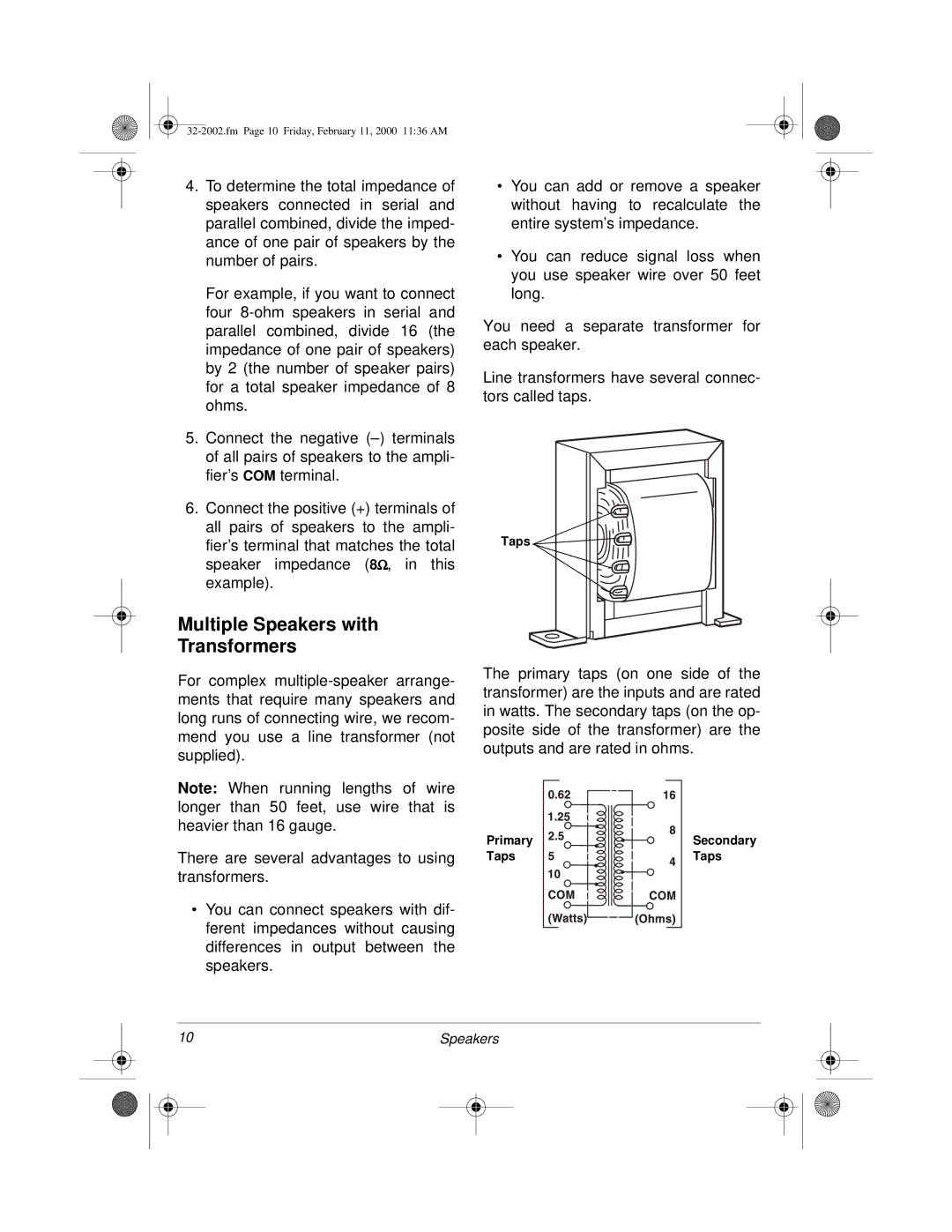
4.To determine the total impedance of speakers connected in serial and parallel combined, divide the imped- ance of one pair of speakers by the number of pairs.
For example, if you want to connect four
5.Connect the negative
6.Connect the positive (+) terminals of all pairs of speakers to the ampli-
fier’s terminal that matches the total speaker impedance (8Ω, in this example).
•You can add or remove a speaker without having to recalculate the entire system’s impedance.
•You can reduce signal loss when you use speaker wire over 50 feet long.
You need a separate transformer for each speaker.
Line transformers have several connec- tors called taps.
Taps ![]()
Multiple Speakers with
Transformers
For complex
Note: When running lengths of wire longer than 50 feet, use wire that is heavier than 16 gauge.
There are several advantages to using transformers.
•You can connect speakers with dif- ferent impedances without causing differences in output between the speakers.
The primary taps (on one side of the transformer) are the inputs and are rated in watts. The secondary taps (on the op- posite side of the transformer) are the outputs and are rated in ohms.
Primary | Secondary |
Taps | Taps |
10 |
| Speakers | ||
|
|
|
|
|
|
|
|
|
|
|
|
|
|
|
